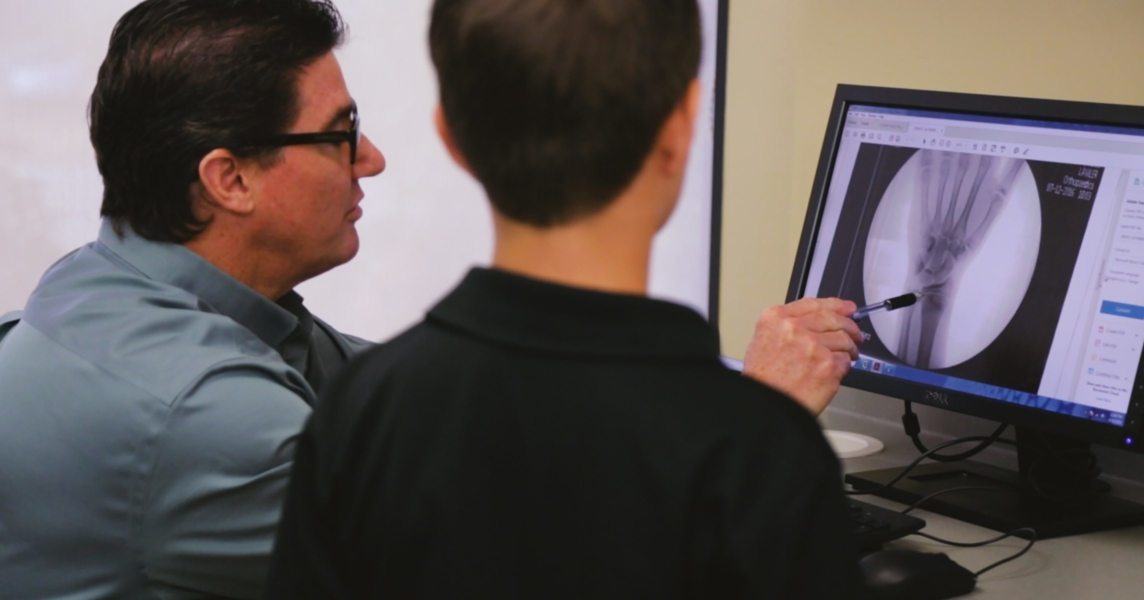Orthopedics, Hip Arthroscopy
and Sports Medicine
More Info
Shoulder Surgery and Sports Medicine
Pediatric Hand & Wrist
More Info
Orthopedic Surgery and Sports Medicine
More Info
Orthopedics and Sports Medicine
More Info
Orthopedic Trauma Surgery, Pelvic Fractures & Pelvic Reconstruction
More Info
If you experience an injury or a broken bone, it’s important to see a doctor as soon as possible. The specialists at California Orthopedics & Spine have years of experience treating broken bones. Your doctor can also help you create a rehabilitation plan to help you regain functional abilities faster after an injury.
Symptoms of Bone Injuries
If you have a broken bone, you will likely experience swelling around the injury, bruising, and pain or tenderness around the area. The injured appendage may also look somewhat out of place or bent, depending on the severity of the break.
Your doctor will likely perform an X-ray to determine whether your bone is broken. Once the type of break is determined, your doctor will be able to form a treatment plan. Your doctor will likely also ask you about your symptoms, your overall health, and how the injury occurred to get a better idea of how to treat you.
Types of Fractures
We’ve described the most common types of fractures below:
- Stress fractures, also known as hairline fractures, are tiny cracks in the bone. These fractures are usually caused by repetitive strain or excess training, rather than being caused by a single forceful injury.
- Stable fractures occur when a bone breaks, but the two ends of the bone are barely out of alignment.
- Transverse fractures are breaks with a horizontal fracture line. The break transverses the bone.
- Oblique fractures have an angled break — more vertical than a transverse fracture.
- Compound fractures are generally more severe. In this type of fracture, the bone may partially or fully pierce the skin. Sometimes the bone is visible from the outside, but not always.
- Comminuted fractures cause the bone to shatter into three or more pieces. More forceful injuries can break the bone into multiple pieces.
The type of fracture your experience, combined with your overall health and other factors, will determine the type of treatment that is appropriate for you.
Treatments for Fractures
Bones have incredible regenerative capabilities, which means that given enough time, they can usually heal themselves. However, if a break goes untreated, the bone may heal into the wrong position, or if the break is severe, it may not be able to heal properly at all. Any treatment plan for a broken bone will have the same basic goal: to put the pieces of bone back into proper position and stabilize those pieces until they have time to heal back together. The bone may be stabilized using one of the following methods:
- Cast immobilization is the most common treatment for most bones. Most people are familiar with fiberglass or plaster casts used to stabilize the bone and prevent movement.
- Braces or controlled movement devices work similarly to casts, but usually they allow some very limited joint movement.
- Traction aligns bones through a gentle pulling process. This method can be done externally, using tape and special weights, or internally, using surgically placed pins or wires. You will likely receive an anesthetic to prevent pain if you require internal traction, also known as skeletal traction.
- Internal fixation, where special plates, screws, or rods are surgically inserted to hold the bone in place.
- External fixation, where metal pins are connected from within the bone to a metal bar outside the skin. Typically, this method is only used if the soft tissue or skin around the fracture is too badly damaged by the injury, or if the patient cannot tolerate full surgery for some time.
No matter which treatment you need, our specialists will do everything possible to reduce pain and ensure you are comfortable. Bone injuries can really hurt, and a local anesthesia is often used to prevent pain during treatment. For more serious procedures, you may receive full general anesthesia. Your doctor will discuss these options with you before beginning your treatment.
Bone Injury Treatment in Marin County
If you experience a fractured bone, our orthopedic specialists can help you find a treatment option that fits your needs. Our doctors are experts at setting casts, surgical repairs, and forming rehabilitation plans to help you regain your normal strength after an injury. For more information, feel free to contact our office. If you experience a severe injury, seek emergency treatment immediately.










